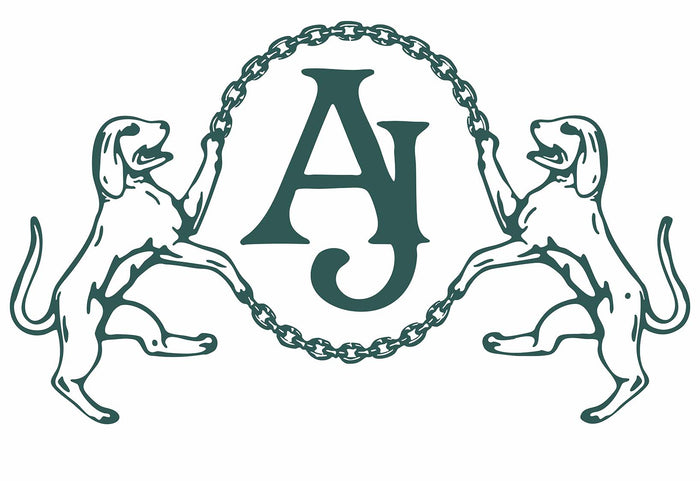The orange blossom emerged as the quintessential symbol of Victorian wedding jewellery following Queen Victoria's revolutionary choice to wear a simple wreath of orange blossoms rather than diamonds at her 1840 wedding. This floral motif, representing purity, fertility, and eternal love, transformed from fresh blooms into elaborate jewelled parures that became essential elements of Victorian bridal trousseaux.
The Origins of the Orange Blossom Tradition
Queen Victoria's wedding day choice fundamentally altered bridal fashion. The Times reporter's observation that the Queen "wore no diamonds on her head, nothing but a simple wreath of orange blossoms" marked a pivotal moment in jewellery history. This deliberate simplicity, choosing nature over gems for the most important ceremonial occasion, resonated throughout Victorian society and established a tradition that endured for generations.
Symbolism and Meaning
Orange blossoms carried multiple layers of symbolism particularly suited to Victorian sensibilities. The white flowers represented the bride's purity and innocence, whilst the fruit that grew alongside the blooms symbolised fertility and the promise of children. The evergreen nature of the orange tree spoke to eternal love, and the simultaneous presence of flowers and fruit suggested the harmony of beauty and fruitfulness in marriage.
The Victorian language of flowers elevated orange blossom beyond mere decoration. Each element carried meaning: the five petals representing the five traditional wedding blessings, the intoxicating fragrance symbolising the sweetness of married love, and the hardy nature of the plant suggesting the durability of the marriage bond.
The Royal Orange Blossom Parure (1839-1846)
Prince Albert's extraordinary gift to Victoria represents the apotheosis of orange blossom jewellery. Created between 1839 and 1846, this porcelain, gold, and enamel parure demonstrated unprecedented craftsmanship and artistic vision. The suite evolved over several years, with each addition marking significant moments in the royal marriage.
Technical Innovation in Porcelain
The porcelain elements of the parure showcased revolutionary techniques in ceramic jewellery production. Each blossom was individually modelled from real flowering sprigs, achieving botanical accuracy that surpassed previous attempts at floral jewellery. The porcelain petals were fired multiple times to achieve the desired translucency, mimicking the delicate texture of real orange blossom petals.
The gold settings required exceptional skill to secure the fragile porcelain elements whilst maintaining the naturalistic appearance. Master goldsmiths developed new techniques for creating stems and leaves that appeared to grow organically around the porcelain blooms, using different colours of gold to enhance the realistic effect.
The Evolution of the Suite

The parure developed in stages, each addition reflecting the growing family and deepening bond between Victoria and Albert. The first pieces arrived in the early 1840s, with the second brooch and earrings presented as a Christmas gift in 1845. The crowning achievement, a gold and porcelain circlet with blossoms "studied from real, flowering sprigs," arrived in 1846.
Victoria's journal entry reveals her emotional response: "My beloved one gave me a beautiful wreath in gold and porcelain orange flowers & buds with green and white enamel... made from nature & most beautifully done." This personal testimony underscores the sentimental value these pieces held beyond their considerable artistic merit.
Manufacturing Techniques and Materials
The creation of orange blossom jewellery required mastery of multiple decorative arts. Victorian jewellers employed diverse techniques to capture the delicate beauty of the flowers whilst ensuring durability for pieces intended for regular wear.
Enamel Work
Enamelling proved particularly suitable for creating realistic orange blossoms. Plique-à-jour enamel, where translucent enamel fills cells without backing, created petal effects that captured light like real flowers. White enamel gradating to pale green at the base mimicked the natural colouration of orange blossoms, whilst touches of yellow enamel suggested the stamens.
The green enamel used for leaves required different techniques. Champlevé enamel, where channels are carved into the metal base and filled with enamel, created robust leaves that could withstand daily wear. Multiple firings built up layers of colour, creating the subtle variations found in natural foliage.
Gold and Silver Work
The metalwork supporting orange blossom designs demonstrated the height of Victorian goldsmithing. Repoussé techniques created three-dimensional petals hammered from thin gold sheets, whilst filigree work produced delicate stamens and pistils. Different karats of gold – from pale 9-karat to rich 22-karat – provided colour variation that enhanced naturalistic effects.
Silver, often used for its bright white colour, proved ideal for creating the appearance of fresh white blooms. Oxidisation techniques added depth and shadow to carved details, whilst bright-cut engraving created sparkling highlights that suggested morning dew on petals.
The Spread of the Orange Blossom Fashion
Following Victoria's wedding, orange blossom jewellery rapidly became de rigueur for society brides. The tradition spread through multiple channels: illustrated newspapers disseminated images of royal jewellery, society columns described wedding attire in minute detail, and jewellers' pattern books offered designs "in the style of Her Majesty's wedding ornaments."
Commercial Production
Birmingham workshops, the centre of British jewellery mass production, quickly adapted royal designs for middle-class markets. Stamped brass flowers with white enamel offered affordable alternatives to handcrafted gold pieces. Electroplating technology allowed base metal pieces to achieve the appearance of solid silver, democratising the orange blossom aesthetic.
Pattern books from the 1840s-1890s reveal hundreds of orange blossom designs, from simple spray brooches to elaborate tiaras. Modular construction allowed customers to build parures gradually, purchasing matching pieces as finances permitted. This accessibility ensured the orange blossom tradition permeated all levels of Victorian society.
Regional Variations and International Influence
Whilst the orange blossom tradition originated in Britain, it quickly spread throughout Europe and America, with each region developing distinctive interpretations.
French Interpretations
French jewellers, particularly those of the Second Empire, created orange blossom pieces of exceptional delicacy. Utilising techniques perfected for artificial flower production, Parisian workshops produced jewelled sprays barely distinguishable from real blooms. The French preference for seed pearls created pieces with exceptional luminosity, the pearls suggesting both flower petals and dewdrops.
American Adaptations
American jewellers, particularly Tiffany & Co., created orange blossom designs that combined European tradition with American innovation. The use of Montana sapphires as accent stones and the incorporation of Native American silver-working techniques created distinctively American interpretations of the Victorian original.
Preservation and Collection
Orange blossom parures present unique conservation challenges due to their mixed media composition. Porcelain elements are vulnerable to thermal shock, enamel can chip or crack, and the delicate metalwork requires careful handling.
Dating and Authentication
Authentic Victorian orange blossom jewellery exhibits specific characteristics that aid identification. Hand-finished details, slight irregularities in repeated motifs, and period-appropriate construction techniques distinguish genuine pieces from later reproductions. Hallmarks, when present, provide dating evidence, though many pieces, particularly those with porcelain elements, lack standard marks.
The evolution of manufacturing techniques offers dating clues. Early 1840s pieces show entirely hand-fabricated construction, whilst 1860s examples incorporate machine-stamped elements. Post-1870 pieces often feature Japanese-influenced aesthetics, reflecting the Aesthetic Movement's impact on jewellery design.
The Continuing Legacy

Orange blossom wreaths and trimmings were worn by Victorian royal brides right up to Queen Mary in 1893, establishing a tradition that influenced wedding customs globally. The motif experienced revivals throughout the twentieth century, particularly during the 1920s when Art Deco designers reinterpreted Victorian themes with modernist sensibilities.
Contemporary jewellers continue to draw inspiration from Victorian orange blossom parures, recognising their perfect balance of symbolism, beauty, and craftsmanship. Modern techniques, including laser cutting and CAD design, allow for interpretations impossible in the Victorian era, yet the essential appeal of the orange blossom – its associations with love, purity, and new beginnings – remains unchanged.
The orange blossom parure tradition established by Queen Victoria represents more than mere fashion; it embodies the Victorian genius for investing material objects with deep emotional and symbolic significance. These pieces served not merely as adornment but as tangible expressions of love, hope, and the sacred nature of marriage – values that continue to resonate with modern brides seeking connection to this romantic tradition.


